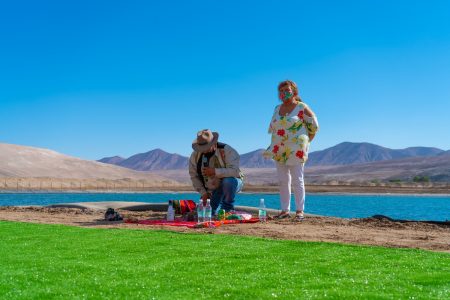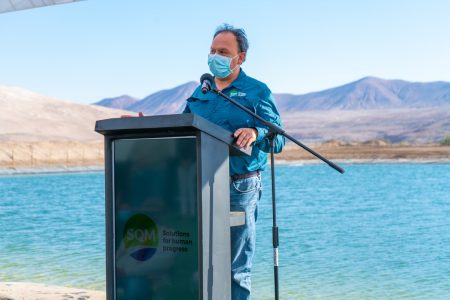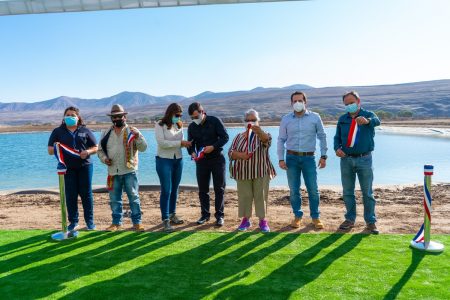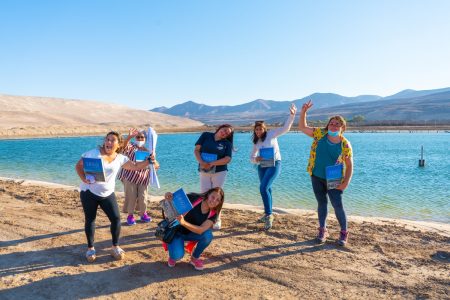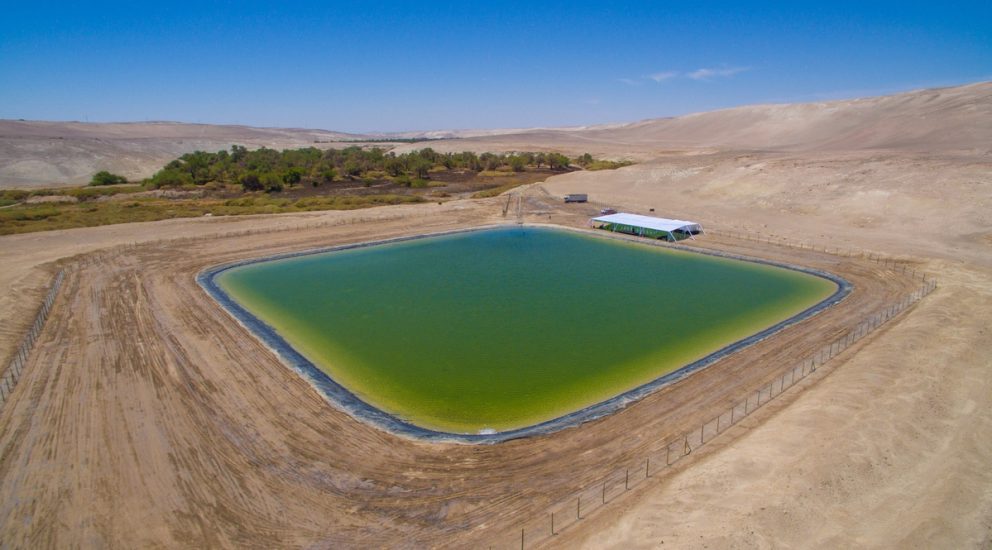
Quillagua Reservoir will provide constant supply of water to the oasis
15/Jan/2021
Human consumption will always be the priority and will account for 15% of the available water, according to calculations. Meanwhile, 85% will be for animal and agricultural use, driving sharp reactivation of the local economy.
Striving to return the constant water supply to the people of Quillagua and, thereby, improve quality of life and the local economy, the regional government worked with SQM, the Farming Innovation Foundation (FIA), the people of Quillagua and the Municipality of María Elena to build a 30-million-liter reservoir to guarantee the water supply for human, agricultural and livestock consumption.
Adriana Guzmán, President of the Quillagua Water Committee explained: “This project is a dream we have been chasing for years. So this is an important milestone for us as a community. It ensures a constant flow of water for human consumption and to bolster the town’s agricultural activities. I want to thank everyone who was involved in this wonderful project that will enable us to rise up, reactivate our family-based economy and improve our quality of life.
The reservoir has the capacity to accumulate 30 million liters of water from the Loa River and required an investment of nearly Ch$180 million. The reservoir is 100% ecological thanks to its gravity-based loading and unloading system. The project began in 2013, but heritage relics were discovered upon excavation. Following last year’s approval from the National Monuments Council, an archaeological plan was drafted, approved and executed. The local companies and workers overseeing the project began construction a year ago.
The reservoir is opening today thanks to the role the Municipality of María Elena and the Indigenous Communities of Quillagua and other community organizations.
“Years of work and dedication, always planning a well-rounded project that seeks to improve the community’s quality of life while striving to meet the Sustainable Development Goals (SDG) promoted by the UN Global Compact. For us, this project is very significant project. It ensures supply for human consumption with 15% of its capacity while the remaining 85% will be for animal and agricultural use so we are expecting sharp reactivation of the local economy,” underscored Director of Communications, Sustainability and Public Affairs at SQM.
The executive added: “This project is part of the SQM Sustainability Plan. The company has already begun to reduce its surface water consumption, which will translate into a 40% reduction by 2030, and is working toward carbon neutrality in lithium, potassium and iodine. Furthermore, brine extraction at Salar de Atacama operations is down 20% and will be down 50% by 2030 thanks to clear commitments, deadlines and an investment of over US$200 million, which furthers SQM’s commitment to the environment, the sustainability of its operations and the entire value creation cycle in which we participate.
The reservoir will provide a constant supply of water to the Quillagua community, ensuring that the inverse osmosis plant has a supply of the life-sustaining element to distribute to the population. This is an important milestone because there have been water deficits at some times of year – lasting up to six months. During these deficits, the supply came from water trucks from María Elena, sent by the municipality and SQM.
Regional Governor of Antofagasta, Edgar Blanco, noted that “this is a joint effort and we are fortunate to be here with you today to mark this historic Quillagua milestone, which began many years ago. With the reservoir, the water and the rights, justice is being served for the people of Quillagua, who are receiving quality of life and dignity.”
Agricultural reactivation
This reservoir was born as a Foundation for Farming Innovation (FIA) project to provide water for alfalfa crops as a way of reviving economic activity in Quillagua. However, after the inverse osmosis plant was installed, the increasingly lower flow of the Loa River in the summer months (December to March) made a water accumulation tank to feed the plant that supplies water for human consumption a priority.
“We know that this project got off to difficult start, but the Foundation for Farming Innovation (FIA) is pleased that the Quillagua Reservoir is finally complete. The area is under constant hydric stress. The path this project has traveled is the spirit of all innovative processes. It has faced adversity and complications, but ultimately has a positive impact on the regional economy, which improves conditions for each of the people who work in agriculture. We want our area’s development figures to improve hand-in-hand with the commitment of public and private institutions and, particularly, the Desert Agriculture community itself, which needs to be maximized in every corner of our region,” said Valezka Alcayaga, a representative from the Foundation for Farming Innovation (FIA) in the Antofagasta Region.
Importantly, the reservoir is multipurpose: “It aims to meet the needs of the townspeople and their different production activities.”
